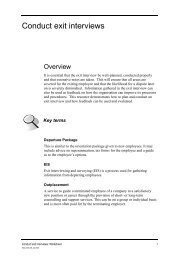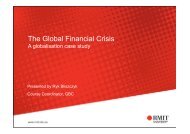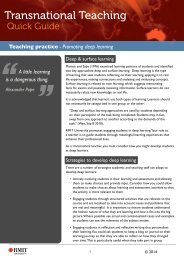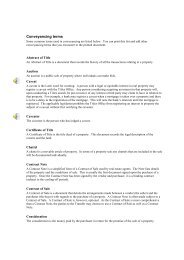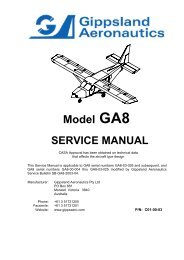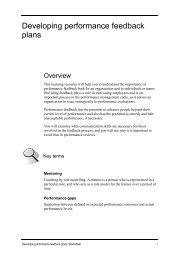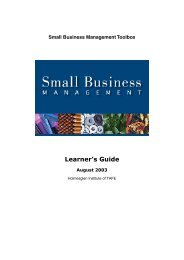Approaching student-centred learning and teaching - RMIT University
Approaching student-centred learning and teaching - RMIT University
Approaching student-centred learning and teaching - RMIT University
You also want an ePaper? Increase the reach of your titles
YUMPU automatically turns print PDFs into web optimized ePapers that Google loves.
Underst<strong>and</strong>ing differences in preferred <strong>learning</strong> stylesAlong with diverse life experiences <strong>and</strong> considerable variation in <strong>student</strong>s’knowledge, skills, cultural background <strong>and</strong> levels of maturity, <strong>student</strong>s also cometo the classroom with a range of preferred <strong>learning</strong> styles. As a result teachersneed to thoughtfully select a variety of <strong>learning</strong> activities <strong>and</strong> tools that willengage all <strong>student</strong>s in <strong>learning</strong>.A <strong>student</strong>’s preferred <strong>learning</strong> style will influence which <strong>learning</strong> activities theywill respond best to so it is necessary for teachers <strong>and</strong> academic staff to use arange of <strong>learning</strong> approaches <strong>and</strong> activities.A variety of <strong>learning</strong>styles requires a varietyof <strong>learning</strong> activitiesAdult <strong>learning</strong> theorists Wolf <strong>and</strong> Kolb (1984) have provided useful modelsto assist underst<strong>and</strong> the differences in <strong>learning</strong> styles. Wolf <strong>and</strong> Kolb’s modeldescribes the four <strong>learning</strong> styles reflected in the following table.Style of LearnerActivistsEngagement strategyRespond to a challenge, new experiences <strong>and</strong>problems, excitement, sense of freedom in <strong>learning</strong>.To accommodate Activists design <strong>learning</strong>experiences that enable <strong>student</strong>s to get involved in ah<strong>and</strong>s-on, practical project. Structure <strong>learning</strong> activitiesallowing time to observe, reflect <strong>and</strong> think.ReflectorsTo accommodate Reflectors provide <strong>student</strong>swith readings, case studies <strong>and</strong> examples. DVD clips<strong>and</strong> audio recordings that provide <strong>student</strong>s withthe opportunity observe or listen to others with adepth of experience in the field of study <strong>and</strong> thendiscuss their reflections can also be very useful. Youmight provide discussion questions to guide <strong>student</strong>reflection <strong>and</strong> discussion.TheoristsAppreciate clear aims <strong>and</strong> logical structure withtime for methodical exploration <strong>and</strong> opportunity toquestion.To accommodate Theorists provide lectures orpresentations that logically outline theories <strong>and</strong>conceptual frameworks. Theorists also enjoy <strong>learning</strong>through reading well-research books <strong>and</strong> articles soit is worth providing additional readings or referencesfor these <strong>student</strong>s. Provide relevant <strong>and</strong> relevant <strong>and</strong>practical <strong>learning</strong> activities where theory can be putinto practice.3 © © 2014




